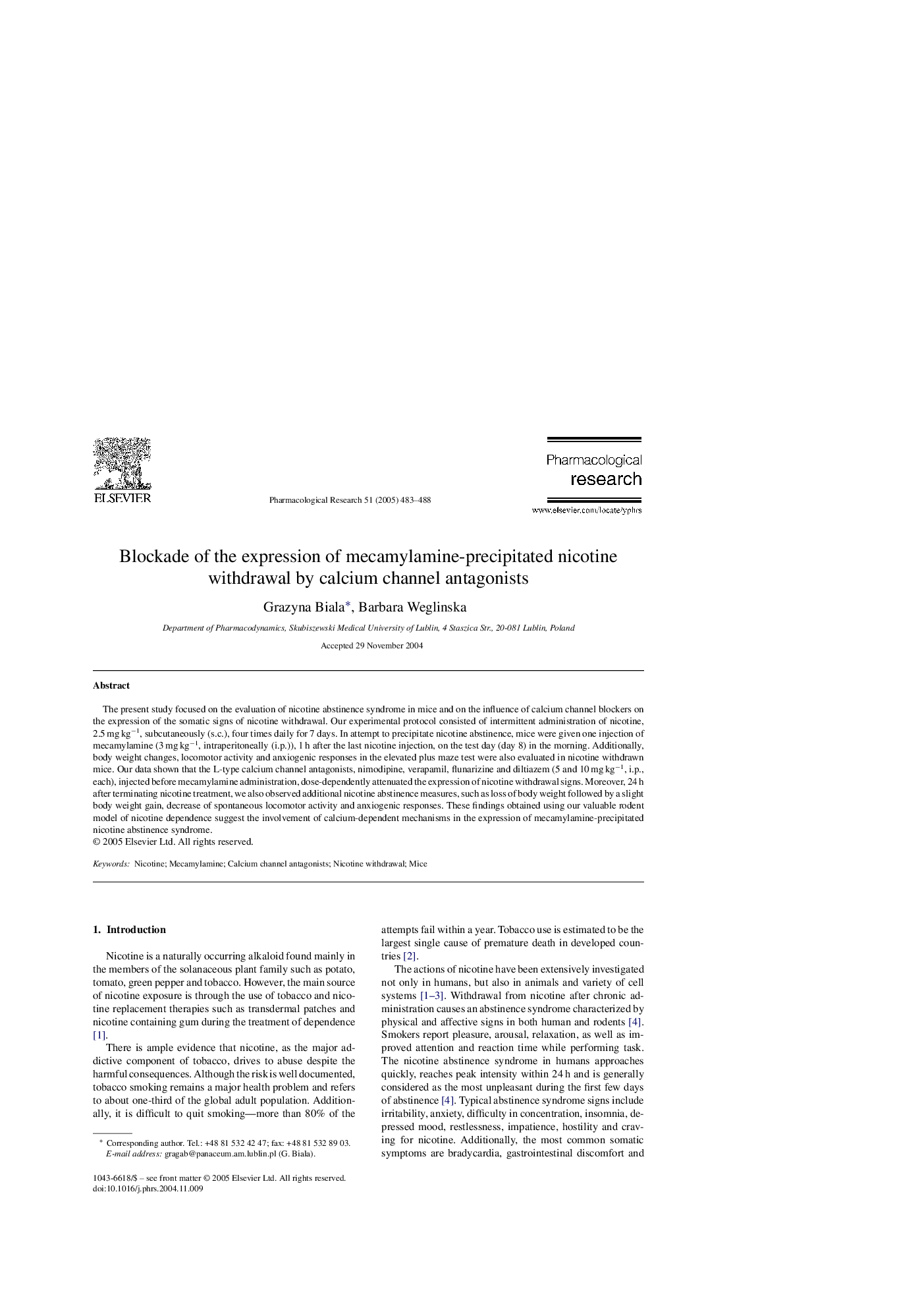| Article ID | Journal | Published Year | Pages | File Type |
|---|---|---|---|---|
| 9014927 | Pharmacological Research | 2005 | 6 Pages |
Abstract
The present study focused on the evaluation of nicotine abstinence syndrome in mice and on the influence of calcium channel blockers on the expression of the somatic signs of nicotine withdrawal. Our experimental protocol consisted of intermittent administration of nicotine, 2.5 mg kgâ1, subcutaneously (s.c.), four times daily for 7 days. In attempt to precipitate nicotine abstinence, mice were given one injection of mecamylamine (3 mg kgâ1, intraperitoneally (i.p.)), 1 h after the last nicotine injection, on the test day (day 8) in the morning. Additionally, body weight changes, locomotor activity and anxiogenic responses in the elevated plus maze test were also evaluated in nicotine withdrawn mice. Our data shown that the L-type calcium channel antagonists, nimodipine, verapamil, flunarizine and diltiazem (5 and 10 mg kgâ1, i.p., each), injected before mecamylamine administration, dose-dependently attenuated the expression of nicotine withdrawal signs. Moreover, 24 h after terminating nicotine treatment, we also observed additional nicotine abstinence measures, such as loss of body weight followed by a slight body weight gain, decrease of spontaneous locomotor activity and anxiogenic responses. These findings obtained using our valuable rodent model of nicotine dependence suggest the involvement of calcium-dependent mechanisms in the expression of mecamylamine-precipitated nicotine abstinence syndrome.
Related Topics
Health Sciences
Pharmacology, Toxicology and Pharmaceutical Science
Pharmacology
Authors
Grazyna Biala, Barbara Weglinska,
